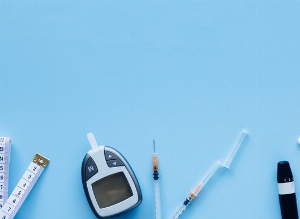What is insulin resistance?
Published Aug 17, 2021 • By Aurélien De Biagi
Insulin is a key hormone that controls many of our bodily processes. However, problems with this hormane may arise and are at the root of many health issues today.
Insulin resistance, a condition in which our cells stop responding to insulin, is highly common, estimated to affect over 30% of the US population. Insulin resistance often develops in people who are overweight or obese and can lead to metabolic disorders such as dyslipidemia or cardiovascular conditions such as high blood pressure.
So what is insulin resistance exactly? What causes it? How is it treated?
We explain it all below!

What is insulin resistance?
Insulin is a hormone secreted by the pancreas. It travels via the blood vessels to the cells of the muscles and adipose tissue (fat) that consume glucose. By interacting with its receptor, it allows glucose to enter the cells. Insulin is, for example, secreted after a meal in order to lower blood sugar levels. If glucose is not consumed by these cells, it can also be stored in the liver. This very precise blood sugar regulation system is very effective in normal circumstances.
However, some people can become insulin-resistant, often because of excess fat, particularly in the abdominal area. This resistance results in a lower efficiency of insulin. Blood sugar levels therefore rise. This resistance usually precedes type 2 diabetes.
Insulin resistance usually goes unnoticed in the first few years. This is because the pancreas manages to secrete more hormones to compensate for the reduced efficiency. Unfortunately, this hypersecretion of insulin causes a number of complications.
Indeed, hyperinsulinemia (higher than normal insulin levels in the blood) causes the synthesis of triglycerides by the liver which can lead to hepatic steatosis (fatty liver disease). This increase in triglycerides in turn leads to dyslipidemia: high triglycerides, increased LDL-cholesterol ("bad cholesterol") and decreased HDL-cholesterol ("good cholesterol").
In addition, hyperinsulinemia also leads to sodium retention in the kidneys, which can cause high blood pressure.
Finally, in the long term, the capacity of the pancreas is exhausted. The result, after a few years, is the onset of type 2 diabetes and all the complications, particularly cardiovascular, that accompany it. It is at this point that the symptoms become apparent.
What causes insulin resistance?
The main causes of insulin resistance are excess weight or obesity and a sedentary lifestyle:
- Adipose tissue (fat) secretes numerous hormones and peptides. These molecules, which have various functions, are notably responsible for regulating eating behavior and energy expenditure. In people who are obese, the hormones responsible for increasing insulin sensitivity are less secreted, while those responsible for insulin resistance are more secreted.
- In people who live a sedentary (inactive) lifestyle, the diffusion of insulin is hindered by the reduction of the capillaries (small blood vessels) in the muscles. In addition, there is a decrease in slow muscle fibers in people who are inactive. These slow muscle fibers consume a significant amount of glucose and are therefore very sensitive to insulin. This results in an increase in insulin resistance. Endurance exercise helps to develop these muscle fibers and increase insulin sensitivity.
How is insulin resistance treated?
The first treatment for insulin resistance is to make dietary and lifestyle changes. It is important to note that this resistance is both controllable and reversible.
Here are a few changes that can be implemented:
- Weight loss (for those who are overweight or obese): Even a weight loss of a few kilos can lead to significant improvement. This is because the visceral tissue (close to the organs) is the most sensitive to lipolysis (the consumption of fat). They will therefore be the first to be affected. Thus, even if there is no aesthetic change, the weight loss' effects on insulin resistance will be clear.
- Fighting against sedentary lifestyle: Regular physical activity (equivalent to 30 minutes of walking a day, 5 days a week) is essential.
- A healthy and balanced diet
In addition, insulin resistance can develop into type 2 diabetes. This is why blood sugar monitoring is also necessary.
In terms of drug treatment, oral anti-diabetic medications, such as metformin, can be prescribed.
Sources:
- Kocełak, P., Chudek, J., & Olszanecka-Glinianowicz, M. (2012). Prevalence of metabolic syndrome and insulin resistance in overweight and obese women according to the different diagnostic criteria. Minerva endocrinologica, 37(3), 247–254.
- La résistance à l’insuline, une conséquence dangereuse de l’excès de poids, Institue de Cardiologie de Montréal
- Prédiabète et insulinorésistance, Ooreka Santé
- Syndrome d'insulino-résistance type A, Orpha Net
- Qu’est-ce que l’insuline?, Diabète Québec
- Déceler et traiter l’insulino-résistance et ses conséquences, Association Française de formation médicale continue en hépato-gastro-entérologie
2 comments
You will also like

Diabetes: Discrimination, Professional Life, Plan Ahead... What do patients say?
Nov 9, 2018 • 9 comments

 Facebook
Facebook Twitter
Twitter



